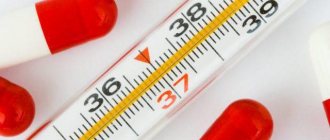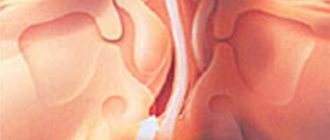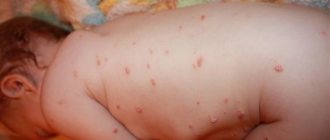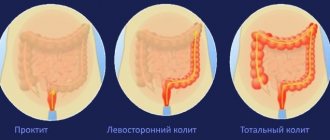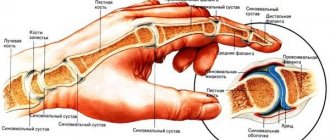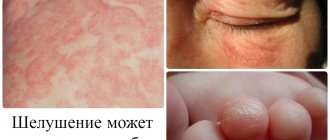If a couple cannot conceive a child naturally within a year, both parents are simultaneously sent for examination to identify the cause of infertility. Men, as a rule, are reluctant to agree to one of the most important and revealing tests - a spermogram.
But it is this analysis that can reveal the presence of abnormalities in a man’s sperm that do not allow him to become a father. Pathologies can be different, but one of the most common is asthenozoospermia. This name means nothing to most people who are far from medicine. Asthenozoospermia - what is it and how to treat this disease?
Asthenozoospermia is a deviation from the norm in which the sperm in the semen are inactive and have an irregular structure. It is the predominance of such sperm that explains infertility, but it is most often reversible as a result of proper treatment prescribed by a doctor.
Causes and symptoms
Asthenozoospermia is a disease that develops without symptoms. Accordingly, the only way to diagnose it is to take a spermogram.
The causes of asthenozoospermia are varied.
Most often they are associated with poor lifestyle and negative environmental influences:
- sedentary lifestyle;
- a large amount of fast food, junk and fatty foods;
- prolonged stress;
- weak immunity;
- living in an area with an unfavorable environmental situation (polluted air, areas near major highways, nearby factories, a small number of trees, etc.);
- prolonged exposure to harmful substances or electromagnetic radiation;
- excessive overheating or hypothermia of the pelvic organs;
- long-term abstinence from sex;
- consumption of alcohol, psychotropic substances;
- smoking;
- chronic inflammatory diseases or sexually transmitted diseases.
It happens that the cause of asthenozoospermia is a genetic mutation in the genes that regulate the formation and maturation of sperm. In this case, the structure of sperm is often disrupted.
Biological features
Biologically, asthenozoospermia is caused by the following factors:
- altered morphology of sperm flagella and mitochondria;
- gluing of active spermatozoa;
- sperm acidity;
- changes in chemical composition;
- external influence;
- high viscosity of seminal fluid.
Diagnosis and treatment
Asthenozoospermia can be diagnosed using a spermogram, that is, semen analysis. A spermogram should be taken twice to assess how quickly the disease develops and what degree of asthenozoospermia the man currently has.
Treatment is selected depending on the stage of the disease. In the event that the cause of asthenozoospermia is an incorrect lifestyle or a poor environmental situation, first of all, the doctor will suggest eliminating the harmful influence.
Thus, the man will be asked to lead a healthy lifestyle, eat a balanced and healthy diet, walk more, have a sex life appropriate for his age and condition, give up bad habits and minimize stress factors.
If the cause is the presence of sexually transmitted diseases or inflammation, you will have to first cure them, and chronic ones will have to be put into remission.
However, there are also specific ways to treat asthenozoospermia, including with the help of drugs. They are also used in cases where the cause of asthenozoospermia could not be established.
- Special complexes to improve spermatogenesis. For example, the Speroton complex contains the amino acid L-carnitine, vitamin E, folic acid, zinc and selenium, which improve sperm motility by 49% and the proportion of sperm with normal structure.
- Medicines to improve blood flow in the testicles.
- Physiotherapy and massage to improve the condition of the male reproductive system.
In the case of asthenozoospermia, hormonal drugs are rarely prescribed and only a specialist can do this, and only if hormonal factors influence sperm production. Self-medication in this case is excluded, since it can only worsen the situation.
If a man carefully follows all the doctor’s instructions, there is a chance that a repeat spermogram after 30 days will show an improvement in the situation, although sperm maturation lasts 72 days, so doctors recommend counting on a three-month course of treatment.
For the most part, except for rare and advanced cases, as well as genetic abnormalities, asthenozoospermia is reversible and treatable.
Why does asthenozoospermia occur?
In order to conceive a child, you need to have about 70% of sperm that are active and moving in a straight path. If, after the examination, the results of a spermogram show that the number of active sperm is less than normal, then the man is diagnosed with asthenozoospermia. This disease is widespread among males and is the main cause of infertility. Asthenozoospermia is asymptomatic and the disease can be identified only after laboratory examination of the seminal fluid.
Among the reasons for the development of asthenozoospermia, experts note:
- Genetic characteristics, the consequences of which are disturbances in sperm morphology;
- Stress, depression, overexertion;
- Wearing tight underwear;
- Tobacco smoking and drug use;
- Inflammatory and venereal diseases;
- Frequent overheating due to visiting baths and saunas;
- Prolonged sexual abstinence and promiscuity;
- Surgical diseases;
- Bad ecology;
- Low level of immunity;
- Consumption of alcoholic beverages and certain medications;
- Poor nutrition, lack of vitamins, minerals and trace elements necessary for the body.
There are also quite rare causes that can cause the disease:
- Sperm defect at the structural level;
- Changes in sperm DNA;
- Kartagener's syndrome;
- Dysplasia of the fibrous film, which is located in the tail part of the sperm.
The treatment method is prescribed by a doctor after conducting a comprehensive diagnosis and identifying the causes of the disease, and can be either surgical or conservative.
Can a woman get pregnant if a man has asthenozoospermia?
Asthenozoospremia is not absolute infertility (the inability to have children), but a decrease in the likelihood of conception to almost zero. However, the likelihood of conception directly depends on the degree of asthenozoospermia.
The problem is that sperm “have” to get to the egg, and do this against the flow of cervical mucus flowing towards them. This is why sperm motility has such an impact on your chances of getting pregnant. If almost all the sperm stop moving two hours after ejaculation, then they simply will not be able to reach the place where the egg is located.
If the treatment of asthenozoospermia is successful, the couple will be able to conceive a child naturally. But if the disease is too advanced or difficult to correct, then assisted reproductive technologies (ART) come to the aid of those who want to become parents.
Prevention of asthenospermia
Prevention of asthenospermia comes down to general measures. A healthy lifestyle, the ability to cope with stress, proper alternation of activity and rest, a balanced, nutritious diet. Particular attention should be paid to the quality of sexual life, the prevention of diseases of the genitourinary and cardiovascular systems.
Regular, satisfying sex, well-organized physical activity, a positive emotional background, the ability to enjoy life and achieve success are banal recommendations, but following just such simple rules will allow you to maintain health and strength, including sexual strength, for a long time.
How can a woman become pregnant if her partner has asthenozoospermia?
If a man has asthenozoospermia, then, purely theoretically, sperm have a chance of meeting an egg and fertilizing it, but this chance is almost zero. As statistics say, with a large number of attempts and enough time, such an event can happen. But the trouble is that the number of attempts is limited, on the one hand, by the period of ovulation, on the other hand, by the duration of human life and the readiness of the couple to have children. After a few years of unsuccessful attempts, they may simply give up on the idea of becoming parents. Therefore, it is better not to rely on theory, but to seek the help of doctors and take the medications they prescribe.
If asthenozoospermia cannot be corrected and pregnancy does not occur naturally, then the following procedures can help:
- intrauterine insemination - a procedure in which a man’s sperm, obtained outside of sexual intercourse, is introduced into the woman’s genital tract;
- ICSI is a more complex procedure that involves selecting the most viable sperm.
This does not mean that you can simply let go of the situation and rely on modern medical technologies, since conceiving naturally is still preferable: pregnancy has a greater chance of successful resolution.
Diagnostic measures
Since asthenozoospermia does not have pronounced symptoms, and sexual activity remains, men often do not even suspect about the disease, until a spermogram is performed.
In order to identify the causes of sperm movement disorders, the doctor conducts a survey of the patient, an external examination, determines the presence of testicles in the scrotum and their volume, and excludes the presence of varicocele and hydrocele.
To make a diagnosis, a specialist must have the results of an ultrasound examination of the scrotum and testicles, the vas deferens, diagnostics of the prostate gland, genetic, laboratory tests to detect other diseases or structural features.
In order to assess the quality of sperm and accurately determine the presence of a disease such as asthenozoospermia, the doctor needs spermogram data, the most important indicator of which is the time of sperm liquefaction.
Immediately after ejaculation, the consistency of the seminal fluid, as it contains semenogelin. Too high a viscosity may eliminate or limit sperm activity. During ejaculation, prostate fluid, which contains a certain enzyme that destroys glycoprotein (semenogelin), combines with the fluid of the seminal vesicles and sperm. After some time, the sperm liquefies and the sperm can actively move. The normal liquefaction time does not exceed 60 minutes. If this time increases, male reproductive cells in the acidic environment of the vagina lose activity, which significantly reduces the possibility of fertilization of the egg.
Another important characteristic of a spermogram is the number of active sperm. There are 4 categories of sperm:
- Category A - these are active sperm that move quickly along a straight path;
- Category B – these are weakly mobile sperm, moving along a straight trajectory;
- Category C – sedentary cells whose movements are oscillatory or rotational;
- Category D is sperm that lack the ability to move.
For conception, the number of active sperm of category A in the ejaculate must be at least 25%, or 50% of sperm from groups A and B. If less than normal active sperm are found in a man’s ejaculate, this may be a symptom of asthenozoospermia. To confirm the diagnosis, doctors recommend repeating a spermogram.
Experts distinguish 3 degrees of severity of asthenozoospermia based on the content of germ cells in the ejaculate:
- 1st degree – the percentage of active sperm in the seminal fluid is 50% or more, which indicates the absence of serious disorders;
- Grade 2 – the number of sperm of categories A and B is less than 40%. This degree requires careful diagnosis in order to identify and eliminate the factors that caused the deviation. With degree 2 asthenozoospermia, the probability of conception is quite low, so the man needs to consult a specialist to prescribe treatment;
- Grade 3 – the number of active sperm is less than 30%, sperm of categories C and D predominate.
The chances of fertilization of an egg with stage 1 asthenozoospermia are quite high, but conception if stage 3 of the disease is detected without complex treatment is almost impossible.
Asthenozoospermia as a cause of male infertility
As a cause of male infertility, asthenozoospermia remains one of the least severe problems. This condition can be reduced to a milder form by taking medications with L-carnitine, folic acid and zinc, or even completely cured.
The disease can occur in men at any age, so it is very important to lead a healthy lifestyle and consult a doctor at the stage of planning pregnancy. If you take care of the condition of the male reproductive system in advance, take a spermogram, or simply take a course of Speroton to improve sperm quality, you can identify and solve the problem in a timely manner.
THIS IS NOT AN ADVERTISING. THE MATERIAL WAS PREPARED WITH THE PARTICIPATION OF EXPERTS.
What it is
The specialist must tell the patient that asthenospermia is a disorder of the structure of the seminal fluid, leading to insufficient activity and speed of sperm movement. In addition to the fact that the “live ones” move poorly, their number in the ejaculate is kept to a minimum, which makes it difficult to fertilize the egg.
But you shouldn’t give up in advance. Asthenospermia and pregnancy are quite compatible, but in order to have offspring, the couple will have to try hard. According to statistics, men with this diagnosis are completely infertile in only 10% of cases. By identifying and eradicating the true cause of the pathology, one can hope for positive results.




